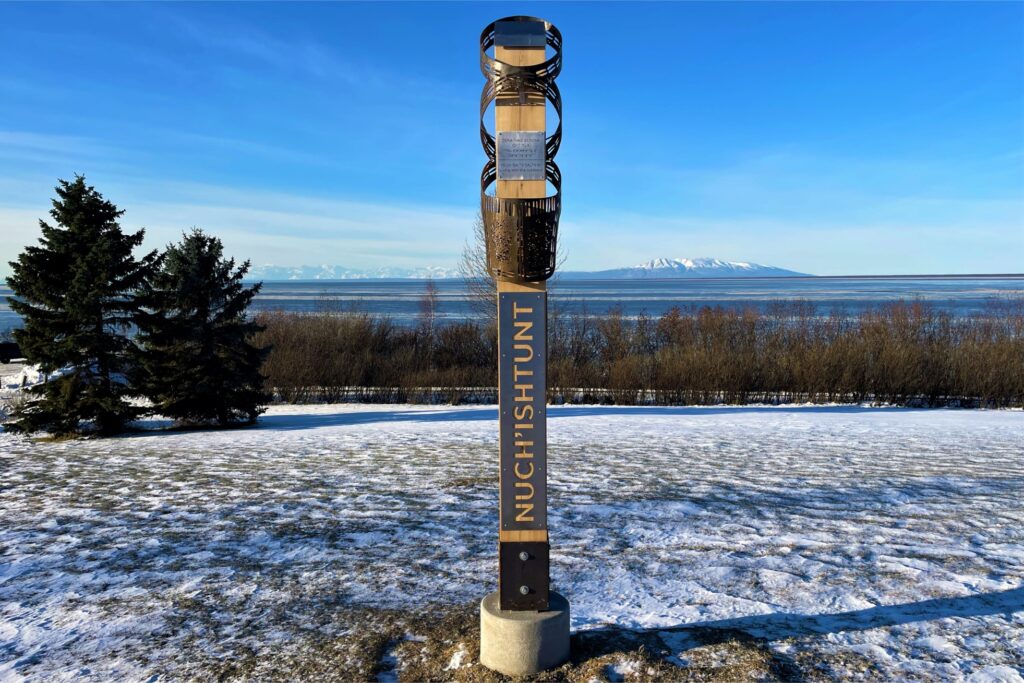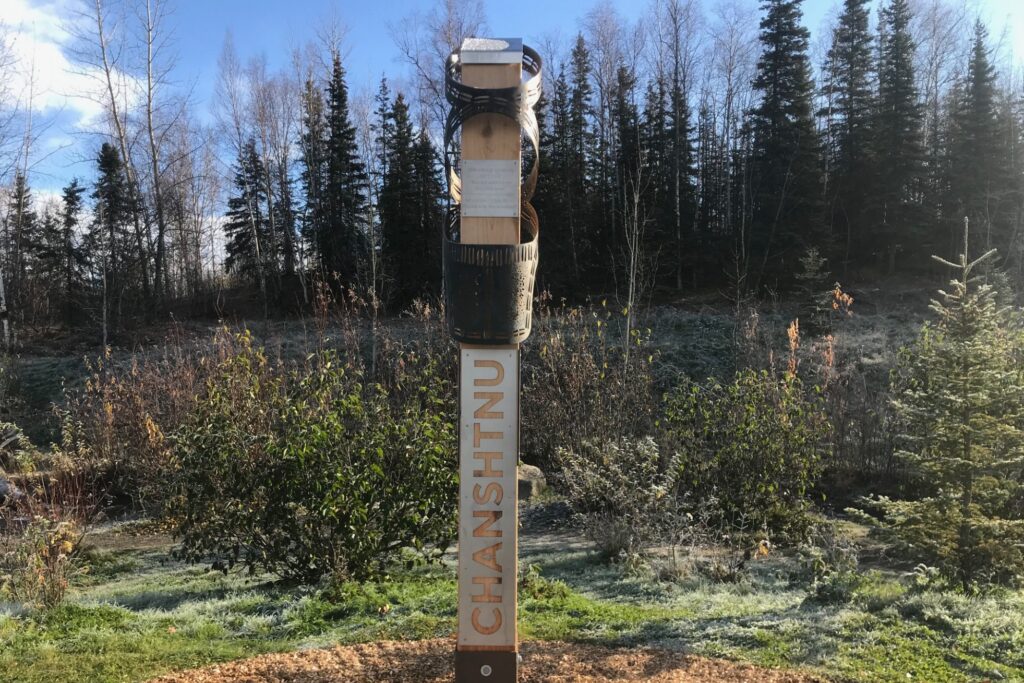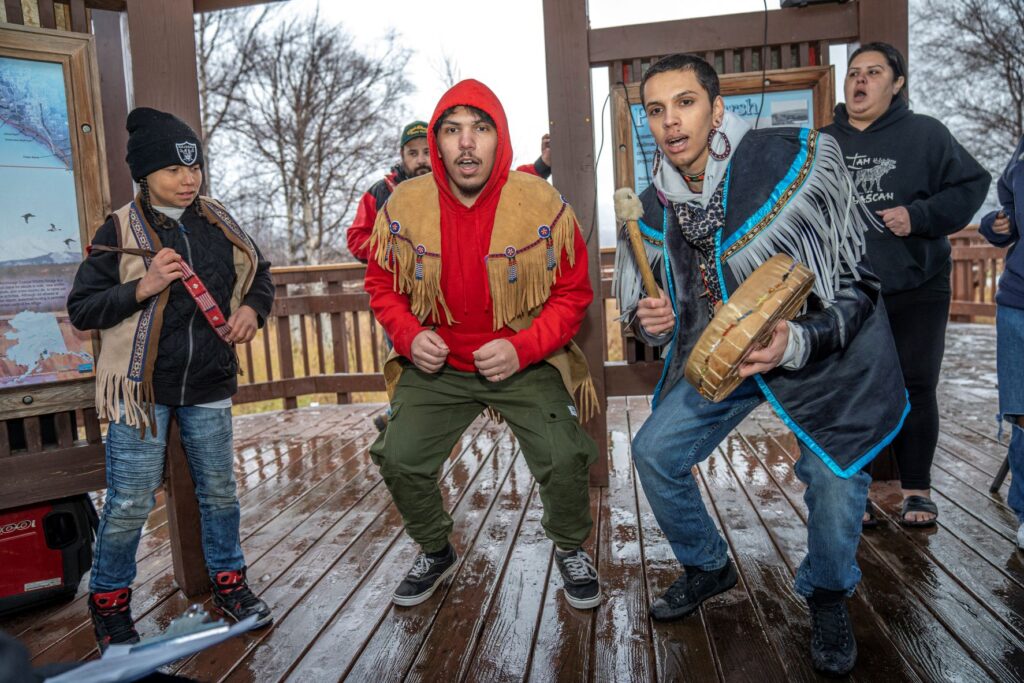DISCOVER YOUR LOCAL BICYCLING COMMUNITY
Find local advocacy groups, bike shops, instructors, clubs, classes and more!
Celebrating Indigenous Culture on the Trails of Anchorage, Alaska
Last year, the League of American Bicyclists published the Bicycle Friendly Community Ideabook — a resource designed to inspire innovative ideas for making biking better in communities nationwide. In celebration of Indigenous People’s Day, we’re highlighting an excerpt from the BFC Ideabook that showcases Anchorage, Alaska’s unique approach to weaving local Indigenous cultures into its built environment.
At the League, we envision a Bicycle Friendly America where everyone can experience the joy and wellbeing that bicycling brings—celebrating diverse identities and histories in the process. At every stage of planning transportation networks for people biking and walking, there’s an opportunity to prioritize equity and accessibility in our built environment. Whether it’s placemaking through public art installations or using inclusive language on way-finding signage, our communities grow stronger when we celebrate culture and honor our local histories. Keep reading to explore how the Anchorage Park Foundation and local Indigenous leaders are making this vision a reality in Anchorage.
In Silver-level BFC Anchorage, Alaska, the Anchorage Park Foundation has worked with local Indigenous leaders to incorporate Indigenous place names, culture, and history on trails and in parks. According to Anchorage’s 2021 BFC application, The Indigenous Place Names Project “aims to creatively, accurately, and beautifully highlight the culture and history of Anchorage and our indigenous people.” The effort began when Aaron Leggett, Dena’ina scholar and president of the local Native Village of Eklutna, proposed the project to the Foundation, which then secured funding from the Rasmuson Foundation to begin the work in 2018. The Foundation describes this project as “a movement to bring Dena’ina culture to our built environment and place name signage” to honor the Dena’ina landscape in the Anchorage area.
The signs installed through this project are designed by local Indigenous artists. Not only do the artistic placemaking signs feature the original Dena’ina-language names of the places where the signs are located, but they also share stories and help tell the history of the places and their significance to the Indigenous communities who have lived in the region for generations.


“Indigenous place names encompass relationships with the land, water and animals of an environment. To the Dena’ina place names convey a sense of history and oral traditions that inform people about Anchorage’s diverse geography. Dena’ina names stand in stark contrast to the European practice of naming places after people, such as Chester, Potter, and Woronzof.” — Diana Rhoades, Director of Community Engagement at the Anchorage Park Foundation
The Foundation shares these lessons learned for other communities: “From this project, we’ve learned that to change the paradigm and create a city that honors the Indigenous Place, there must be three components: 1. The leadership of a local culture bearer; 2. Advisory oversight from a broad base of stakeholders; and 3. Involvement of an Indigenous artist if it is appropriate to the project. It is the combination of these three elements that allow a project to become part of a Movement and live beyond initial contributors to the next generation of our community.”

Anchorage’s Indigenous Place Names Project serves as a powerful example of how communities can honor Indigenous history and culture within the fabric of their built environment. By weaving Indigenous stories into wayfinding signage and public art installations, Anchorage is not only creating a more Bicycle Friendly Community, but also ensuring the history and voices of the Dena’ina people are recognized and celebrated.
As more and more communities embrace efforts to uplift Indigenous voices and heritage, the lessons from Anchorage remind us that inclusive leadership and meaningful partnerships are key to creating lasting change. We look forward to seeing how more communities will incorporate these elements to build a Bicycle Friendly America for all. For more inspiration, keep exploring the BFC Ideabook and interactive Ideabook map, and watch the video below to learn more about the Indigenous Place Names Project.